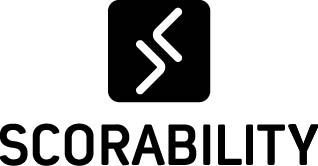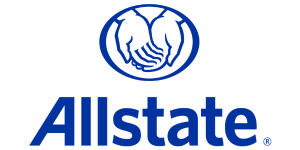
Social Security Benefits: It Can Pay to Wait
July 25, 2023
Hello, coaches. Dead periods and vacations are wrapping up, and preseason camps are near. We wish all of you the best in preparing for the 2023 season.
Much like your players who work hard and put their blood, sweat, and tears into getting themselves as prepared as possible for all that the 2023 season will have in store for them, you and your staffs (and your families in a lot of cases) work hard and put in countless hours over many years to prepare yourselves for retirement one day. As financial advisors, we see a variety of ways that retired clients meet their retirement income needs.
Some coaches rely heavily on employer-sponsored retirements like a 401(k), 403(b), or even a pension paid by their school, state, or professional team to cover a portion of their retirement budget.
Other coaches take on other, less demanding jobs. Some have accumulated a portfolio of rental properties which generate income to make ends meet. And some are even fortunate enough to become business owners or to receive an inheritance that help to pay the bills.
Regardless, 97% of Americans aged 60 years and older rely on benefits from Social Security to satisfy some or most of their retirement income needs. More specifically*:
- 37% of men receive 50% or more of their income from Social Security
- 47% of women receive 50% or more of their income from Social Security
- 12% of men receive 90% or more of their income from Social Security
- 15% of women receive 90% or more of their income from Social Security
No matter what your personal retirement income plan may look like, there are important considerations to keep in mind around when and how to claim Social Security that can help you make the most of your benefits for retirement and other financial goals.
Many people have both practical and emotional considerations regarding when to claim Social Security, a system many of us pay into our entire working lives. Still, you should consider your complete financial picture in retirement before making such a big decision.
Maximizing your benefits, which may include postponing when you begin claiming, can help you in achieving other financial goals in retirement, such as estate planning and gifting, paying for health care expenses and giving back through philanthropy. Here’s what to keep in mind when considering when to claim and how to use your benefits.
The Basics of Social Security Benefits
Who can claim Social Security benefits? Generally, you’re eligible to receive benefits if you’ve worked and paid Social Security taxes for at least a combined 10 years prior to claiming your retirement benefits. For each year you work and pay into Social Security through taxes, you earn a minimum of four credits toward your benefits, meaning you need a minimum of 40 credits to qualify.
Though you can begin collecting Social Security benefits as early as age 62, doing so may cost you, as your permanent benefit amount could be reduced by 25% to 35%. At Full Retirement Age (FRA), which for most retirees is 66 or 67, you will be entitled to full Social Security benefits.
If you can wait even longer to claim you can further boost how much you will receive each month. Your benefit may increase by an additional 8% each year you delay past your FRA, up to age 70. The maximum benefit for those who begin claiming at age 70 is currently $4,555 a month, $1,983 a month more than for those who start claiming at age 62*. It is important to note that there is no additional advantage to delaying collecting benefits beyond age 70.
Social Security and Your Other Financial Goals
If you don’t need your Social Security benefits to live on in retirement, the money can be put toward other financial goals. For example, your benefits can be used to assist family members financially, can support your overall charitable giving or could be used to help defray expenses that may crop up in retirement.
The benefits can help fund a broader gifting strategy for heirs. You can use the funds to supplement outright gifts made to family members or use the money to help fund a 529 education savings plan for grandchildren or even great-grandchildren.
Social Security benefits can also be used to help fund retiree health care costs or pay for a long-term care insurance policy, both of which can be expensive even for those with a sizable nest egg.
Also, knowing you will draw steady income from Social Security may free you to invest some of your retirement nest egg more aggressively than you would have otherwise, possibly generating higher gains. Unlike other potential sources of retirement income, such as drawing down from your own savings, Social Security provides a source of funds that are generally indexed to inflation and will last as long as you live.
The Social Security Decision
While no one has a crystal ball to see into the future, your personal situation should play into when you look to claim benefits. Health issues or other concerns about longevity may be a catalyst for some to claim their benefit sooner.
How and when you claim Social Security benefits is a complex decision that may have important income and tax implications. Be sure to discuss your situation with your Tax and Financial Advisors to make the best possible decision for you and your family.

Keith Norris

Matt Kuerzi
About the Authors
Keith Norris, First Vice President and Financial Advisor, and Matt Kuerzi, Vice President and Financial Advisor, are co-founders of The Derby City Group at Morgan Stanley in Louisville, Kentucky. They have combined over 40 years of experience helping families with their financial planning (1). In 2019, Matt was recognized by Forbes in their first ever list of “Best-In-State Next-Gen Advisors”. He can be reached directly at (502) 394-4094 or [email protected].
Branch address: 4969 U.S. Highway 42, Suite 1200, Louisville, KY 40222
(1) Keith Norris, First Vice President, Financial Advisor, experienced in the financial services industry since 1997. Matt Kuerzi, Vice President, Financial Advisor, experienced in the financial services industry since 2002.
(2) Source: http://www.morganstanley.com/ideas/retierment-savings-vs-education-savings
(3) Source: http://www.irs.gov/retirement-plans/plan-participant-employee/retirement-topics-401k-and-profit-sharing-plan-contribution-limits
(4) Source: http://www.irs.gov/newsroom/tax-benefits-for-education-information-center
(5) Source: https://www.savingforcollege.com/compare-529-plans
The information contained in this article is not a solicitation to purchase or sell investments. Any information presented is general in nature and not intended to provide individually tailored investment advice. The strategies and/or investments referenced may not be appropriate for all investors as the appropriateness of a particular investment or strategy will depend on an investor’s individual circumstances and objectives. Investing involves risks and there is always the potential of losing money when you invest.
Tax laws are complex and subject to change. Morgan Stanley Smith Barney LLC (“Morgan Stanley”), its affiliates and Morgan Stanley Financial Advisors and Private Wealth Advisors do not provide tax or legal advice and are not “fiduciaries” (under the Investment Advisers Act of 1940, ERISA, the Internal Revenue Code or otherwise) with respect to the services or activities described herein except as otherwise provided in writing by Morgan Stanley and/or as described at www.morganstanley.com/disclosures/dol. Individuals are encouraged to consult their tax and legal advisors (a) before establishing a retirement plan or account, and (b) regarding any potential tax, ERISA and related consequences of any investments made under such plan or account.
Source: Forbes.com (July, 2021). Top Next-Gen Wealth Advisors. SHOOK considered advisors born in 1981 or later with a minimum 4 years as an advisor. Advisors have: built their own practices and lead their teams; joined teams and are viewed as future leadership; or a combination of both. Ranking algorithm is based on qualitative measures: telephone and in-person interviews, client retention, industry experience, credentials, review of compliance records, firm nominations; and quantitative criteria, such as: assets under management and revenue generated for their firms. Investment performance is not a criterion because client objectives and risk tolerances vary, and advisors rarely have audited performance reports. Rankings are based on the opinions of SHOOK Research, LLC, and are not indicative of future performance or representative of any one client’s experience. Neither Morgan Stanley Smith Barney LLC nor its Financial Advisors or Private Wealth Advisors pay a fee to Forbes or SHOOK Research in exchange for the ranking. For more information, see www.SHOOKresearch.com.
Asset Allocation does not assure a profit or protect against loss in declining financial markets.
The views expressed herein are those of the author and do not necessarily reflect the views of Morgan Stanley Wealth Management or its affiliates. All opinions are subject to change without notice. Neither the information provided nor any opinion expressed constitutes a solicitation for the purchase or sale of any security. Past performance is no guarantee of future results.
Morgan Stanley Smith Barney LLC offers a wide array of brokerage and advisory services to its clients, each of which may create a different type of relationship with different obligations to you. Please visit us at http://www.morganstanleyindividual.com or consult with your Financial Advisor to understand these differences.
Morgan Stanley Smith Barney LLC. Member SIPC.
CRC 4841404 7/2022
For more information about the AFCA, visit www.AFCA.com. For more interesting articles, check out The Insider and subscribe to our weekly email.
If you are interested in more in-depth articles and videos, please become an AFCA member. You can find out more information about membership and specific member benefits on the AFCA Membership Overview page. If you are ready to join, please fill out the AFCA Membership Application.
« « Previous PostNext Post » »
Hello, coaches. Dead periods and vacations are wrapping up, and preseason camps are near. We wish all of you the best in preparing for the 2023 season.
Much like your players who work hard and put their blood, sweat, and tears into getting themselves as prepared as possible for all that the 2023 season will have in store for them, you and your staffs (and your families in a lot of cases) work hard and put in countless hours over many years to prepare yourselves for retirement one day. As financial advisors, we see a variety of ways that retired clients meet their retirement income needs.
Some coaches rely heavily on employer-sponsored retirements like a 401(k), 403(b), or even a pension paid by their school, state, or professional team to cover a portion of their retirement budget.
Other coaches take on other, less demanding jobs. Some have accumulated a portfolio of rental properties which generate income to make ends meet. And some are even fortunate enough to become business owners or to receive an inheritance that help to pay the bills.
Regardless, 97% of Americans aged 60 years and older rely on benefits from Social Security to satisfy some or most of their retirement income needs. More specifically*:
- 37% of men receive 50% or more of their income from Social Security
- 47% of women receive 50% or more of their income from Social Security
- 12% of men receive 90% or more of their income from Social Security
- 15% of women receive 90% or more of their income from Social Security
No matter what your personal retirement income plan may look like, there are important considerations to keep in mind around when and how to claim Social Security that can help you make the most of your benefits for retirement and other financial goals.
Many people have both practical and emotional considerations regarding when to claim Social Security, a system many of us pay into our entire working lives. Still, you should consider your complete financial picture in retirement before making such a big decision.
Maximizing your benefits, which may include postponing when you begin claiming, can help you in achieving other financial goals in retirement, such as estate planning and gifting, paying for health care expenses and giving back through philanthropy. Here’s what to keep in mind when considering when to claim and how to use your benefits.
The Basics of Social Security Benefits
Who can claim Social Security benefits? Generally, you’re eligible to receive benefits if you’ve worked and paid Social Security taxes for at least a combined 10 years prior to claiming your retirement benefits. For each year you work and pay into Social Security through taxes, you earn a minimum of four credits toward your benefits, meaning you need a minimum of 40 credits to qualify.
Though you can begin collecting Social Security benefits as early as age 62, doing so may cost you, as your permanent benefit amount could be reduced by 25% to 35%. At Full Retirement Age (FRA), which for most retirees is 66 or 67, you will be entitled to full Social Security benefits.
If you can wait even longer to claim you can further boost how much you will receive each month. Your benefit may increase by an additional 8% each year you delay past your FRA, up to age 70. The maximum benefit for those who begin claiming at age 70 is currently $4,555 a month, $1,983 a month more than for those who start claiming at age 62*. It is important to note that there is no additional advantage to delaying collecting benefits beyond age 70.
Social Security and Your Other Financial Goals
If you don’t need your Social Security benefits to live on in retirement, the money can be put toward other financial goals. For example, your benefits can be used to assist family members financially, can support your overall charitable giving or could be used to help defray expenses that may crop up in retirement.
The benefits can help fund a broader gifting strategy for heirs. You can use the funds to supplement outright gifts made to family members or use the money to help fund a 529 education savings plan for grandchildren or even great-grandchildren.
Social Security benefits can also be used to help fund retiree health care costs or pay for a long-term care insurance policy, both of which can be expensive even for those with a sizable nest egg.
Also, knowing you will draw steady income from Social Security may free you to invest some of your retirement nest egg more aggressively than you would have otherwise, possibly generating higher gains. Unlike other potential sources of retirement income, such as drawing down from your own savings, Social Security provides a source of funds that are generally indexed to inflation and will last as long as you live.
The Social Security Decision
While no one has a crystal ball to see into the future, your personal situation should play into when you look to claim benefits. Health issues or other concerns about longevity may be a catalyst for some to claim their benefit sooner.
How and when you claim Social Security benefits is a complex decision that may have important income and tax implications. Be sure to discuss your situation with your Tax and Financial Advisors to make the best possible decision for you and your family.
 Keith Norris |
 Matt Kuerzi |
About the Authors
Keith Norris, First Vice President and Financial Advisor, and Matt Kuerzi, Vice President and Financial Advisor, are co-founders of The Derby City Group at Morgan Stanley in Louisville, Kentucky. They have combined over 40 years of experience helping families with their financial planning (1). In 2019, Matt was recognized by Forbes in their first ever list of “Best-In-State Next-Gen Advisors”. He can be reached directly at (502) 394-4094 or [email protected].
Branch address: 4969 U.S. Highway 42, Suite 1200, Louisville, KY 40222
(1) Keith Norris, First Vice President, Financial Advisor, experienced in the financial services industry since 1997. Matt Kuerzi, Vice President, Financial Advisor, experienced in the financial services industry since 2002.
(2) Source: http://www.morganstanley.com/ideas/retierment-savings-vs-education-savings
(3) Source: http://www.irs.gov/retirement-plans/plan-participant-employee/retirement-topics-401k-and-profit-sharing-plan-contribution-limits
(4) Source: http://www.irs.gov/newsroom/tax-benefits-for-education-information-center
(5) Source: https://www.savingforcollege.com/compare-529-plans
The information contained in this article is not a solicitation to purchase or sell investments. Any information presented is general in nature and not intended to provide individually tailored investment advice. The strategies and/or investments referenced may not be appropriate for all investors as the appropriateness of a particular investment or strategy will depend on an investor’s individual circumstances and objectives. Investing involves risks and there is always the potential of losing money when you invest.
Tax laws are complex and subject to change. Morgan Stanley Smith Barney LLC (“Morgan Stanley”), its affiliates and Morgan Stanley Financial Advisors and Private Wealth Advisors do not provide tax or legal advice and are not “fiduciaries” (under the Investment Advisers Act of 1940, ERISA, the Internal Revenue Code or otherwise) with respect to the services or activities described herein except as otherwise provided in writing by Morgan Stanley and/or as described at www.morganstanley.com/disclosures/dol. Individuals are encouraged to consult their tax and legal advisors (a) before establishing a retirement plan or account, and (b) regarding any potential tax, ERISA and related consequences of any investments made under such plan or account.
Source: Forbes.com (July, 2021). Top Next-Gen Wealth Advisors. SHOOK considered advisors born in 1981 or later with a minimum 4 years as an advisor. Advisors have: built their own practices and lead their teams; joined teams and are viewed as future leadership; or a combination of both. Ranking algorithm is based on qualitative measures: telephone and in-person interviews, client retention, industry experience, credentials, review of compliance records, firm nominations; and quantitative criteria, such as: assets under management and revenue generated for their firms. Investment performance is not a criterion because client objectives and risk tolerances vary, and advisors rarely have audited performance reports. Rankings are based on the opinions of SHOOK Research, LLC, and are not indicative of future performance or representative of any one client’s experience. Neither Morgan Stanley Smith Barney LLC nor its Financial Advisors or Private Wealth Advisors pay a fee to Forbes or SHOOK Research in exchange for the ranking. For more information, see www.SHOOKresearch.com.
Asset Allocation does not assure a profit or protect against loss in declining financial markets.
The views expressed herein are those of the author and do not necessarily reflect the views of Morgan Stanley Wealth Management or its affiliates. All opinions are subject to change without notice. Neither the information provided nor any opinion expressed constitutes a solicitation for the purchase or sale of any security. Past performance is no guarantee of future results.
Morgan Stanley Smith Barney LLC offers a wide array of brokerage and advisory services to its clients, each of which may create a different type of relationship with different obligations to you. Please visit us at http://www.morganstanleyindividual.com or consult with your Financial Advisor to understand these differences.
Morgan Stanley Smith Barney LLC. Member SIPC.
CRC 4841404 7/2022
For more information about the AFCA, visit www.AFCA.com. For more interesting articles, check out The Insider and subscribe to our weekly email.
If you are interested in more in-depth articles and videos, please become an AFCA member. You can find out more information about membership and specific member benefits on the AFCA Membership Overview page. If you are ready to join, please fill out the AFCA Membership Application.
















